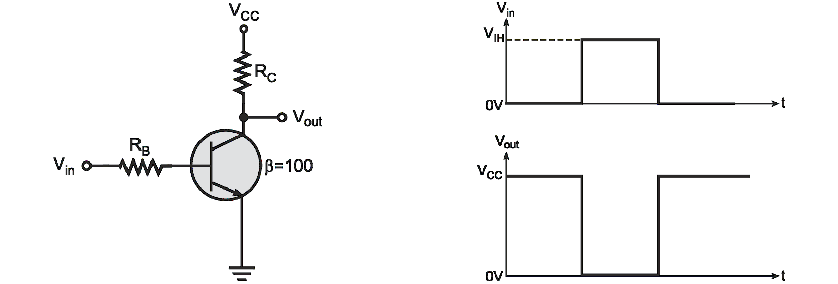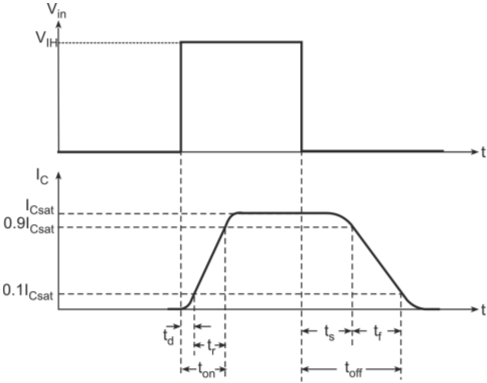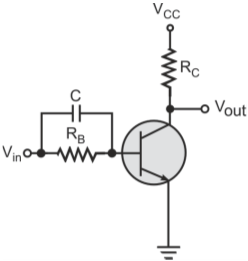Transistors are used as switching devices in computers and other control applications. Figure below shows the use of a transistor as an inverting switch with the input and the output waveforms. When a logic-LOW input is applied, the transistor is in the cut-off region and the output is at logic-HIGH and acts as an open switch. It is in the saturation region for a logic-HIGH input, the output is at logic-LOW and acts as a closed switch.

Transistor switch circuit with input and output waveforms
Logic-HIGH Input Condition: Transistor should be heavily saturated for a logic-HIGH input signal. The saturation collector current (IC(sat)) is given by the equation

The level of base current (IB) in the active region just before the saturation region can be approximated by

The base current (IB(max)) is kept to be 20–25% more than the value of IB(sat). This ensures ensure that the transistor is in deep saturation. Therefore, the ratio of the collector current to the base current when the logic-HIGH input is applied is less than the transistor current gain ( Β). The minimum value of input voltage (VIH) required to drive the transistor into deep saturation is given by

The resistance between the emitter and the collector terminals when the transistor is in saturation is given by

The resistance offered by the transistor switch when in saturation is equal to Rsat. The value of Rsat is in the range of few ohms to few tens of ohms. Logic-LOW Input Condition: For input voltage equal to zero, the collector current (IC) is equal to the leakage current (ICO). This current is negligible and hence the collector voltage is at the logic-HIGH level. Also, the collector–emitter resistance is very high in the range of several hundreds of kilo-ohms to few mega-ohms. The circuit thus acts as an open circuit.

